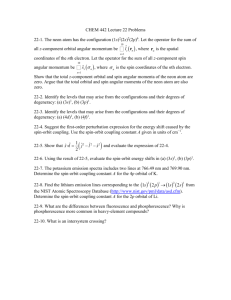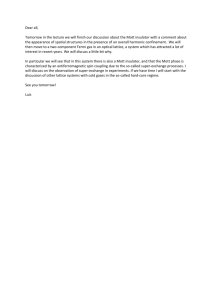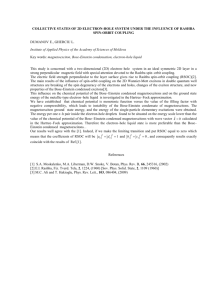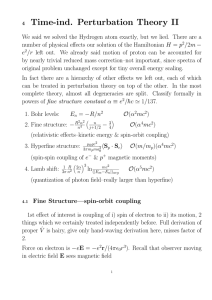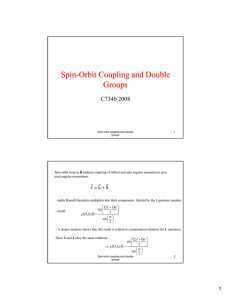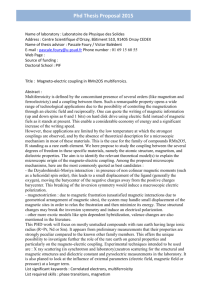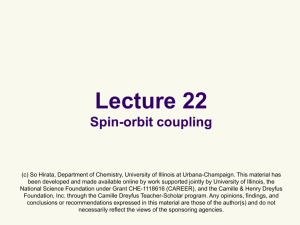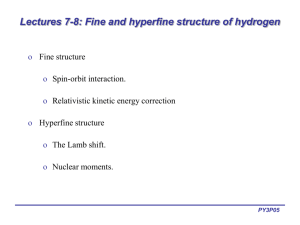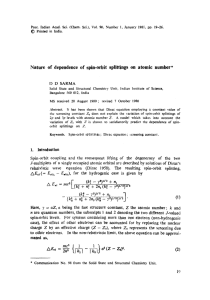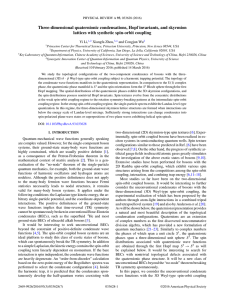2D Heisenberg antiferromagnetism in spin
advertisement
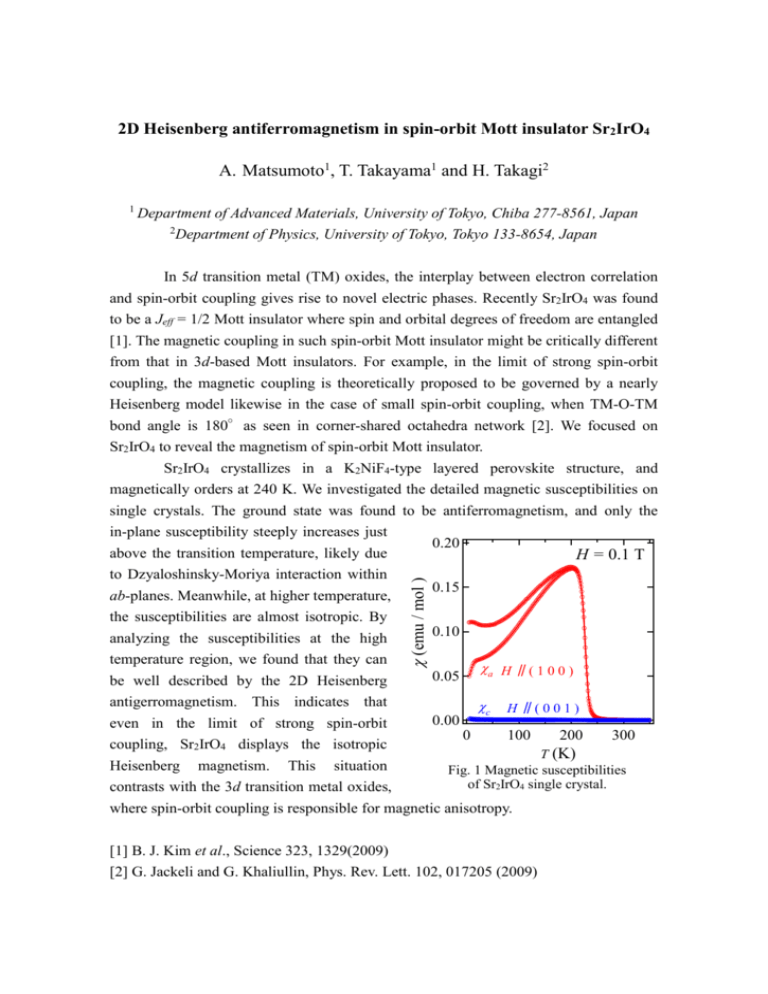
2D Heisenberg antiferromagnetism in spin-orbit Mott insulator Sr2IrO4 A. Matsumoto1, T. Takayama1 and H. Takagi2 1 Department of Advanced Materials, University of Tokyo, Chiba 277-8561, Japan 2 Department of Physics, University of Tokyo, Tokyo 133-8654, Japan In 5d transition metal (TM) oxides, the interplay between electron correlation and spin-orbit coupling gives rise to novel electric phases. Recently Sr2IrO4 was found to be a Jeff = 1/2 Mott insulator where spin and orbital degrees of freedom are entangled [1]. The magnetic coupling in such spin-orbit Mott insulator might be critically different from that in 3d-based Mott insulators. For example, in the limit of strong spin-orbit coupling, the magnetic coupling is theoretically proposed to be governed by a nearly Heisenberg model likewise in the case of small spin-orbit coupling, when TM-O-TM bond angle is 180°as seen in corner-shared octahedra network [2]. We focused on Sr2IrO4 to reveal the magnetism of spin-orbit Mott insulator. Sr2IrO4 crystallizes in a K2NiF4-type layered perovskite structure, and magnetically orders at 240 K. We investigated the detailed magnetic susceptibilities on single crystals. The ground state was found to be antiferromagnetism, and only the 0.20 (emu / mol ) in-plane susceptibility steeply increases just above the transition temperature, likely due to Dzyaloshinsky-Moriya interaction within ab-planes. Meanwhile, at higher temperature, the susceptibilities are almost isotropic. By analyzing the susceptibilities at the high temperature region, we found that they can be well described by the 2D Heisenberg antigerromagnetism. This indicates that even in the limit of strong spin-orbit H = 0.1 T 0.15 0.10 0.05 0.00 a H ∥( 1 0 0 ) c H ∥( 0 0 1 ) 0 100 200 300 coupling, Sr2IrO4 displays the isotropic T (K) Heisenberg magnetism. This situation Fig. 1 Magnetic susceptibilities of Sr2IrO4 single crystal. contrasts with the 3d transition metal oxides, where spin-orbit coupling is responsible for magnetic anisotropy. [1] B. J. Kim et al., Science 323, 1329(2009) [2] G. Jackeli and G. Khaliullin, Phys. Rev. Lett. 102, 017205 (2009)
